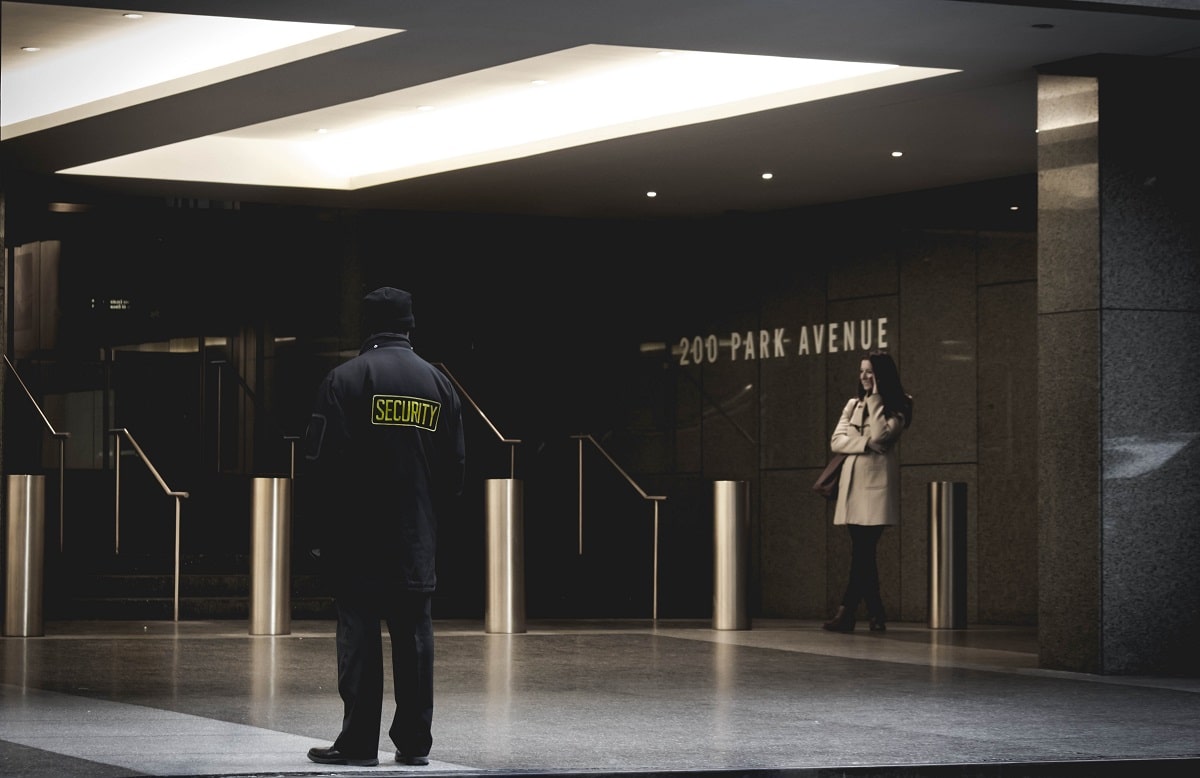
Navigating the TSA Hiring Process: Your Ultimate Preparation Guide
If your ambition is to keep the traveling public and large quantities of cargo safe, Transportation Security Alliance may have a job with your name on it.
However, you will have to prove yourself worthy of that job. This is a government job where employees are working for Homeland Security, ensuring that events like 9/11 never again destroy the security citizens are entitled to have in their lives.
Given the ongoing threats to security, the range of roles and quantity of jobs available continues to grow. But given the level of responsibility involved in working for the TSA, jobs are not randomly handed out.
Anyone can apply for a job on the TSA website, but applicants have to go through a grueling recruitment process before they can say they are working for the TSA.
If it is your ambition to work for the TSA, you need to prepare for that recruitment process.
Table of Contents
What Is The TSA Recruitment Process?
The following list shows you the stages you will have to go through to reach the final step where you CAN start working for the TSA.
- Application
- CBT tests
- Contingent offer
- Credit and Security checks
- Airport assessments and evaluations
- Interview
- Medical examination
- Drug Test
- Background Check
- The TSA Ready Pool
- Orientation
Each of those stages presents significant challenges for the future employee.
Application
Applying for a job on the TSA website is your first step to getting on the recruitment ladder.
You will be asked to open an account with USA Jobs and submit an application on the candidate dashboard to begin the process. When applying, bear in mind that you have to pass each step in the process in order to progress to the next stage.
Another factor to bear in mind is that the process can take from a few months to a couple of years to complete. The length of time you will have to wait depends on the number of open positions available when you apply and the level of success you reach in the recruitment process.
With that level of uncertainty, it is essential to begin preparing for the pre-employment assessments immediately after you apply.
When deciding on what job to apply for, keep the recruitment process in mind.
You need to clarify for yourself if there are any steps that you might find difficult to navigate. These steps could include background and medical checks. If you are likely to encounter difficulties with any of those checks, now is the time to decide if you can rectify the situation.
For example, for some criminal convictions and credit issues, leeway is allowed some years after the date of the conviction.
And, of course, keep an eye on your physical health throughout the process, which will also be checked prior to employment.
TSA Assessments (CBT)
If your application is accepted by the TSA, you will be asked to do the Computer Based Tests (CBT). It tests your English skills and your ability to identify objects in X-Rays.
As pre-employment assessments go, they are demanding. You are being tested on how capable you are of doing a job where you will be responsible for the security and safety of the traveling public.
You can expect to be tested on all the skills required to carry out the work. Bear in mind also that the TSA requires the best people they can find to do the job.
You will not alone have to prove you have the skills. You will also have to prove you are better than the many other applicants you will be in contention with.
Preparation for the recruitment process is essential.
It is best to begin preparing immediately after you apply for a job. There is no guarantee of when you will be asked to take the tests.
What Format Does the CBT Follow?
The CBT is a 2.5-hour test. The English test assesses your vocabulary, reading comprehension, and written communication skills. The X-Ray identification test measures your ability to identify a range of objects in a series of X-Ray images of passengers’ luggage.
The English Test
The test requires you to do 50-60 multiple-choice questions within a strict time limit. The purpose of the test is to check if you can read and understand English as well as have the ability to present written information.
Reading Comprehension
Here you will be presented with short passages followed by multiple-choice questions.
For this, you will need to read quickly and extract information relevant to the questions. This may not appear to be very challenging. But, if like a great many people, reading is not one of your preferred hobbies, then it can be tricky.
With practice, you will learn to skim quickly through a passage and develop techniques to do the test quickly. Train yourself to read the questions before reading the passage. That will enable the answers to jump out at you more quickly.
Also, be very careful to limit yourself to only the information contained in the passage. Introducing extraneous ideas will reflect badly on your accuracy.
Example Question:
Try those tips with the following question. Remember, you only have 90 seconds to do the question.
A New law ensures that trafficked people are treated as victims of crime, not as illegal immigrants.
They must be properly assessed and provided with safe accommodation, benefits, and healthcare. There are also requirements about breathing space for recovery and, if appropriate, witness protection in criminal proceedings.
It is better to use public money for investment in victim support than for payment of compensation for official incompetence and mistreatment. This law also strengthens police cooperation to align offenses and penalties so as to enhance the prospects of putting behind bars the criminals who run the modern-day slave trade.
Which of the following is provided to trafficking victims under the new law?
- Protection in case of a threat.
- Money donation.
- Reduced payment for accommodation costs.
- Payment of compensation.
Vocabulary Section
Here, your ability to spell will be checked, as well as the meanings of words. You can also be asked to identify synonyms and antonyms.
You can help yourself here by working hard at identifying every new word you come across as well as by doing sample questions.
Example Question:
Try the following question.
Roger remained obstinate in his decision, and we couldn’t change his mind.
Which of the following words is a synonym for “obstinate” as used in the sentence above?
A. Relaxed. B. Flexible. C. Unyielding. D. Friendly.
Written Communication Test
This test asks you to find errors in a written piece. You will be asked to identify grammar, spelling, punctuation, and capitalization errors or decide if there is no error in a piece.
Working on sample papers will make you more comfortable with this type of question and give you a clearer idea of what you should be looking for.
Example Question:
The following is typical of this type of question.
Please identify which type of error appears in the sentence below, if any.
The drunk driver made a report that he was driving within the speed limit, but he forgot to mention that he did not have a valid driver’s license.
A. Grammar. B. Spelling. C. Punctuation and Capitalization. D. No mistake.
The TSA X-Ray Object Recognition Test
This test presents a different type of challenge. Your powers of identifying objects and attention to detail come under scrutiny here.
You will be presented with a series of photographs of X-rayed passengers’ luggage and be asked to identify objects within the luggage.
This may appear relatively easy, and you could well ask how hard it is to miss a gun in a suitcase. But the images are taken from X-rays, and objects may be jumbled together. You may be asked to identify personal objects as well as dangerous ones.
To add to the difficulty level of the test, images automatically replace one another very quickly giving you only a few moments to identify an object. Honing your skills for this test will require a lot of preparation.
To get a headstart on that practice, try these free sample object identification questions.
Contingent Offer
When you get a contingent job offer, take a moment to congratulate yourself. You have aced the CBT. But don’t crack open the champagne just yet. You have further checks to get through before the job is truly yours.
Your next task is to complete forms allowing the TSA to carry out credit and security checks on you. You have 14 days to return those forms. If you pass through the checks, your next round of checks will take place at the TSA Airport Assessment.
The TSA Airport Assessment
Here you can expect to be fingerprinted, have a medical assessment as well as a drug test, color vision check, and background checks as well as an interview.
- The medical evaluation will check if you have the strength required to perform the duties of the job. Remember the job will require you to stand for long periods of time, carry heavy weights, and have the flexibility to bend, squat, and stand.
- A psychological test will evaluate your mental state to ensure you have the mental stability required to perform the job.
- The drug test is another essential part of the evaluation process. To get a better understanding of how it is conducted, read the following TSA drug test information.
- The background checks are essential for anybody seeking to take on a role countering terrorism and are conducted to ensure an employee does not compromise the work of the TSA.
Read the following for more details on TSA background checks.
How Do I Prepare For TSA Assessments?
When preparing for pre-employment tests, it is advisable to use the services of a job test preparation company.
For this, we recommend using Job Test Prep which has 30 years of experience in preparing candidates for pre-employment tests. They have a program specifically designed for the TSA recruitment process.
They will provide you with a test prep pack containing the following:
- All the information you need about the assessments and interview
- Sample practice papers modeled on the real tests
- A scoring system to monitor your progress as you do the tests
- Detailed explanations for questions and answers
- Helpful study guides
Your test prep pack will ensure you approach the assessments fully prepared and know precisely what to expect.
To get a feel for the type of tests they give you, try your hand at the following free sample verbal reasoning test.
The Interview
The interview is the area that you can do the most preparation for. You will be interviewed by two people for a 1-hour period. The interview ranges over five categories. To get that job, you have to do well in all five categories.
The interview is competency-based and assesses if you have the competency needed to work on transportation security.
You will be questioned on previous work experiences or on hypothetical situations. The interviewers will assess your competency and integrity by listening to what you did or might do and the consequences of those actions.
The interviewers will also be checking if you are detail-oriented, a fast learner, can handle stressful situations well, and can work well with large groups of people.
When preparing for the interview, review your resume and identify incidents in previous work situations that you could use to your advantage.
Quiz yourself or have a friend quiz you on the events. You will also find helpful advice in the interview guide from your test prep pack.
The Ready Pool
Having passed through all of the recruitment stages, you will be admitted to the TSA Ready Pool, from which candidates are drawn when a vacancy arises.
Your selection from the pool will depend on your final classification after undergoing the assessments and checks. Based on your scores you will be classified as Best Qualified, Highly Qualified, or Qualified.
Selection for an open position will see you having to go through orientation and training for the job before you can finally call yourself a TSA agent.
If you want to join the TSA and help keep our skies safe, you will find all the resources you need to prepare for the recruitment process here.
Written by Elizabeth O Mahony
With 25+ years’ experience as a teacher and state examinations corrector, Elizabeth now writes for the education and careers industry. Her experience preparing students for examinations and running an academy for supplementary education give her invaluable insights into what it takes for job seekers and graduates to succeed in assessments.
Sarah is an accomplished educator, researcher and author in the field of testing and assessment. She has worked with various educational institutions and organisations to develop innovative evaluation methods and enhance student learning. Sarah has published numerous articles and books on assessment and learning. Her passion for promoting equity and fairness in the education system fuels her commitment to sharing insights and best practices with educators and policymakers around the world.








